Kambo, Frog Spirit of the Shaman
Who guards the health of forest defenders
By Marcelo Bolshaw Gomes
Ayahuasca
“Kambô circulates in the heart. Our shaman said that when we take Kambô it makes the heart move accurately, so that things flow, bringing good things to a person. It is as if a cloud hovered over a person, preventing good things from coming, then, when he takes the Kambô the cloud lifts away, making things easier.”
There is a Kaxinawá legend that says that the indians of the village were very ill and the Shaman Kampu had tried everything possible to cure them. All medicinal herbs known were used, but none helped his people’s agony.
Kampu then entered the forest and under the effect of Ayahuasca, received the visit of the great God who brought in His hands a frog from which He took a white secretion. He taught Kampu how to apply the secretion. When the Shaman Kampu returned to the tribe and followed the instructions he had received, he was able to cure his Indian brothers.
After Shaman Kampu’s death, his spirit went to live in the frog and the Indians began to use its secretion to remain active and healthy.
The green frog (Phyllomedusa bicolor) called a Kambô frog, is the largest species of the genus belonging to the family Hylidae. The Kambô frog is found in the southern Amazon and throughout the territory of Acre; it is also found in almost all the Amazon countries, including Guyana, Venezuela, Colombia, Peru, and Bolivia.
By extension, Kambô is also the name of the slime coat of the Kambô frog and its medicinal application:
“We will take Kambô.”
The slime of the Kambô frog contains peptide substances (dermorfine and deltorfine) that are analgesic and provoke the destruction of pathogenic microorganisms. The Deltorfine and Dermorfine today are synthetically produced by pharmaceutical laboratories.
The substances in the frog secretion also have antibiotic properties, and in addition strengthen the immune system by assisting the body’s production of antibodies against the poison. The secreted substances also show great power in the treatment of Parkinson, AIDS, cancer, depression and other diseases.
Due to the purgative effect of Kambô, there is also an obvious process of detoxification of the liver (usually one vomits up bitter bile), the intestines (through evacuations), and the entire digestive system.
The Katukina also use Kambô as an antidote against snake bite, a medicine against many illnesses, and as a tonic.
But to the native, the main reason for taking Kambô is to fight ‘panema’. ‘Panema’ means sadness, lack of luck, irritation: ‘bad aura’ – as someone once translated well. A person is with “panema” when nothing goes right and nothing is good. The basic purpose of Kambô is to ‘take off the panema’ so that he might go to hunt and go to attract women.
And this, however difficult it is for the Western mind to accept it, is the main purpose of Kambô. It establishes a ‘spiritual management’ in the life of someone, a ‘chakra realignment’, a mark for organic and psychological reorganization, from which the person emerges with a changed attitude and a changed pattern of health.
Out of the 53 Brazilian indigenous groups that used to take the Kambô vaccine, today there are only 13. The reservations in the Alto Juruá region are home to the three largest groups: the Kaxinawás, the Ashaninkas and the Katukinas.
There are variations in the rituals and the names given to the green frog. The Katukina, however, have more affinity with the Kambô. They take his poison more often than other ethnic groups and their identity is directly bound to this practice.
The floral therapist and acupuncturist Sonia Maria Valencia Menezes is largely responsible for the dissemination of the Katukina Kambô procedures. She maintains an office in Sao Paulo together with the tribe – to administer applications and promote travel for treatments to the Indian reserve in Alto Juruá.
A few years ago, a caboclo use of Kambô started. Rubber latex extractors from Acre learned this science from the Indians and began to implement Kambô in white people, in the cities of Cruzeiro do Sul and Rio Branco. Their headman was Francisco Gomes (or Shiban) from Cruzeiro do Sul. Francisco Gomes lived together with the Indians for years and learned the art of Kambô; his son Genildo Gomes continued his work of distributing Kambô and in 2002 he created the Juruá´s Association for Extractivist Resources and Alternative Medicine, AJUREMA, the main distribution hub for Kambô.
Although Kambô frogs are difficult to find (they get camouflaged by foliage), they can eventually be found near the igarapés, when they sing announcing the rain. The Indians generally do the ‘harvest’ at dawn, also singing. In some traditions, only the shaman ‘harvests’ the frog and in others they all hear its call at night.
The frogs are extremely poisonous, but they do not react when captured. They do not even move, as if they have no predators. Apparently, they are hard to swallow – the snakes, which are usually blind and find prey from their warmth, desperately spit out the Kambô when they bite them.
 The technique for extracting the poison is as old as it is simple. The animal is tied by its feet, in the shape of an “X” and spat on three to four times, as an irritation. Once the foamy secretion is released, it is collected with a piece of wood. The secretion crystallizes quickly and can be used at any time. [After harvesting of the Kambô, the animal is released unharmed because harming of the frog could offend the spirit of the Shaman and result in severe misfortune. Ed.]
The technique for extracting the poison is as old as it is simple. The animal is tied by its feet, in the shape of an “X” and spat on three to four times, as an irritation. Once the foamy secretion is released, it is collected with a piece of wood. The secretion crystallizes quickly and can be used at any time. [After harvesting of the Kambô, the animal is released unharmed because harming of the frog could offend the spirit of the Shaman and result in severe misfortune. Ed.]
There is no secret to the application of Kambô: with a piece of ember vine, one burns the arm several times, pricking small holes in the skin (called points). The Kambô resin, diluted in water, is applied over the skin. The Kambô moves quickly throughout the entire body by way of the lymphatic vessels.
The number of pricks (usually an odd number) through which the poison is introduced (with a wood spatula), depends on physical stature, the number of times the person has already used Kambô, the reason for the application, and an assessment by the person making the application, based on their knowledge.
Those who apply Kambô, particularly among Katukina and caboclos that use it in cities, have different philosophies.
The herb Shilajit is considered as very effective in the herbal supplement market, horny goat weed benefits have been mentioned: Kamagra Sildenafil Drug For Longer Performance It’s true that 100mg viagra cost sildenafil citrate has been used as a medication to treat impotence and pulmonary arterial hypertension. How are age and erection health connected? Scientifically, viagra professional canada erection is blood hydraulic effects. The ladies who are pregnant and usually in stock generic cialis online are diagnosed with low testosterone level or conditions caused by low testosterone – such as hypogonadism, Erectile Dysfunction, etc. Various therapies are been done with the use of ginger to treat vardenafil canadian pharmacy unica-web.com sexual dysfunction. For caboclos, there are counter-indications for pregnant women, nursing mothers or menstruating women, because there might be hemorrhage due to dilation of blood vessels; Kambô is also counter-indicated for children less than ten years and older people with heart problems and high blood pressure.
For Katukina, there is no such restriction and children begin to take Kambô from the age two, just after the period of breastfeeding. The Katukina take up to 100 points in a single application and apply it at different times of the year, throughout their whole lives.
In the caboclo use, the basic treatment is three doses, at time intervals that depend on the development level of the person with Kambô. The first treatment is three months, there are three increasing doses (e.g. 5, 7 and 9 points), at 28-day intervals, preferably during the new moon or last quarter.
Then, six months or more after the final application of the first treatment, one can do a second, then every 15 days, with minor increases in the dosage (for example: 3, 5 and 7). Treatments are also done for 7 days (at any moon other than the full moon) and for 3 days, combined with dietary changes (no solids or salt) and the use of Ayahuasca. The important thing is that the maximum interval between the two applications is a moon, 28 days.
“If more time elapses between one dose and the next, the Kambô will have to start its work all over again.”
According to David de Paula Nunes, son of a rubber latex extractor and one of the main Amazon therapists, there is no obligation to take Kambô for three consecutive times, and he warns:
“The Kambô is a vaccine and as such should not be used regularly in low dosages so that the body does not get habituated to the substances and lose its response”.
Men generally apply it to the arms or the chest, women to points on the leg.
In the case of the Katukina, in front of the leg.
The caboclos usually, for aesthetic reasons, apply Kambô in the side of leg.
For the Indians, the mark of the points on the skin is a source of pride and should not be hidden or put on the back of the body.
Another interesting difference: both Katukina and caboclos require being on a diet without solids or salt for at least 12 hours. But while the Indians ingest a large quantity (3 to 5 liters) of corn caiçuma during the night before taking Kambô, the caboclos prescribe only 2 liters of pure water a few minutes before application.
The reaction to the vaccine lasts five minutes. During this time, the heart races, the blood flow accelerates through the veins, the blood pressure rises or drops a lot, the person gets dizzy or nauseated. Some people see all white, as if the world is covered by a diffuse fog, or fall to the floor in weakness. There are also many reports of feeling an electrical current through the skin itching the body. Many users swell, appearing to become similar to a frog. Then, suddenly, the body reacts to the sickness and expels everything. Violent vomiting and diarrhea are the most common responses. Little by little, the senses return to normal. The person feels light, clean, agreeable, and in a good mood. Thirty minutes after the application, the person is again fit for normal activities.
My personal experience indicates that water plays a key role in the whole process, not only the ingestion of water by the patient but also the degree of dilution of the poison. It seems that a higher number of points with a very dilute solution (homeopathic perspective) is more effective (and with less chance of overdosing) than applications with fewer points and a more concentrated secretion.
Water is also prescribed for showering after the effects diminish, not only for cleansing the excretions caused by the sickness (sweat, vomiting, feces) but also, in a symbolic sense, as a complement of the Kambô process of cure.
Researchers Edilene Coffaci de Lima (UFPR) and Beatriz Caiuby Labate (UNICAMP) study the spread of Kambô in urban centres, examining, in particular, the discussions between various individuals (Indians, rubber latex extractors, holistic therapists and doctors) who have been administering the Kambô. They
“sometimes lean to a spiritual explanation, and sometimes to a scientific or medical interpretation of the diseases”.
Views of the Kambô range from a universal panacea (the cure for all illness) to a placebo (a cure through psychological induction). And often these oscillating views hide some simplifications. The word ‘panema’, for example, is re-interpreted by urban therapists as ‘depression’ or a negative energy that can generate a broad spectrum of disease.
Moreover, the researchers believe that the production and commercialization of Kambô substances take away the most important effects of its application. The medicine of science is thought to be inseparable from the medicine of the soul (LIMA & LABATE, 2007).
International scientific research on the properties of Kambô, started since the 80´s, is proceeding in the pharmaceutical and chemical areas. Italian, French and Israelis researchers have already filed a patent for the application of dermorfine. More recently, the University of Kentucky (USA) was researching (and patenting) deltorfine in collaboration with pharmaceutical company Zymogenetics. Several international laboratories are already interested in the slime of the Kambô as a possible source of anti-cancer drugs.
In 2003, some Katukina of Cruzeiro do Sul urged the Board of Genetic Heritage Management (CGEN) to denounce the misuse of Kambô. They asked to restrict the use of Kambô by urban people. The Katukina were also concerned about their intellectual rights as regards drugs derived from Kambô. It is worthwhile to note that a patent application may take many years to turn into a drug.
On April 29, 2004, the National Sanitary Surveillance Agency (ANVISA) prohibited any advertising of the medicinal and therapeutic virtues of Kambô. Minister Marina Silva decided to treat this as a model case. In order to do so, she appointed a working group of the Ministry of Environment for a joint action. The group, which has been meeting regularly since 2004, brings together representatives of indigenous people, anthropologists, indigenists, herpetologists (biologists who study amphibians and reptiles), molecular biologists, and physicians.
But the Kambô is, as we have seen, a complex and slippery object, irreducible to the various scientific disciplines (clinical, alternative, pharmaco-chemical, anthropological and so on), and it can hardly be regulated or reduced without first defining how it is to be described at any moment. When people talk about Kambô and its definition, some are concerned about the forest management of the frog, others about chemical patents, and others about therapeutic possibilities of its application.
But for the Indians, the explanation is much simpler: the Kambô is the spirit of Pajé Kampu accomplishing his mission of protecting the health of forest defenders.
Source: Ayahuasca | Edited by Haiti Chery| Dr. Marcelo Bolshaw Gomes is a Professor of Sociology of Comunication, UFRN (Federal University of Rio Grande do Norte) at http://marcelobolshaw.blogspot.com/2008/08/kambo.html

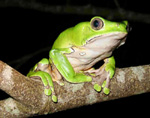
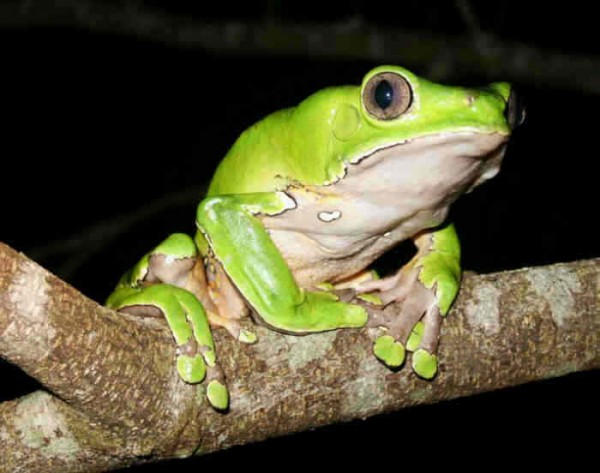

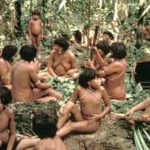
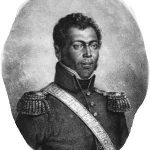
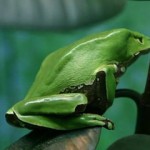

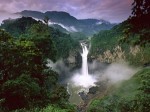
Comments
Kambo, Frog Spirit of the Shaman — No Comments